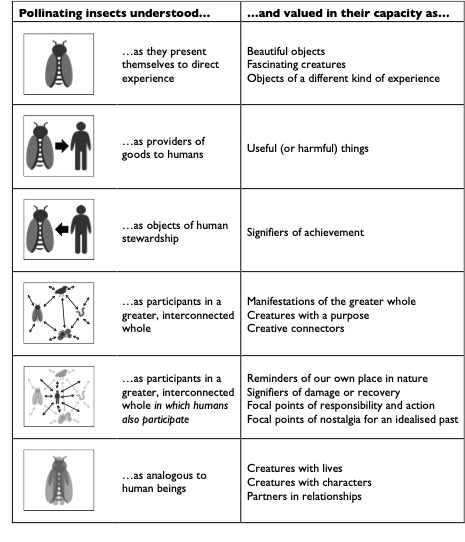This was a large and complicated project. It was commissioned by Defra as one of eleven ‘evidence actions’ in the 2014 National Pollinator Strategy, and aimed to inform both economic assessments of value and communication with the public about pollinators. The project also took place against the backdrop of growing interest in different kinds of value (such as ‘social and cultural value’) and the use of different methods – including from the arts and humanities – to explore them.
Working on the project therefore involved negotiating multiple perspectives on at least three distinct topics.
Pollinating insects
First, there were the different perspectives on pollinating insects that co-exist in our culture: the main topic of the research. At first I was a little concerned there wouldn’t be much to say on this front: but it wasn’t long before we were instead worrying how to justice to the rich, varied and often moving – yes, moving – evidence we were finding. Our findings are summarised in the table below, a poor abstraction of all we saw and heard. (You can download the summary and full reports from the project at the foot of this page.)

Methods
Next, there were the different perspectives in our team on methods we could use to the explore the above. This was a project that combined qualitative methods and discourse analysis with drawing, dance, sculpture and music. Working with an extended team with such varied skills was a delight, and remains one of the personal professional career. Here’s just one of the varied elements – created by composers Spencer Martin and James Gow.
Value
Lastly, there were the different disciplinary perspectives on the topic of value which lay behind the commissioning of the research. This, sadly, was the least satisfying aspect of the project as, not for the first time in my life, I experienced the unwillingness of some economists even to entertain the idea that theirs might not be the only way of seeing the world.